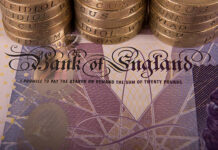Friday’s jobless report from the US was strong. It could’ve gone both ways, but it went well. The US economy added nearly 200’000 new nonfarm jobs in November, average earnings were higher than expected on a monthly basis, but stable around the 4% level on a yearly basis. That’s twice the Federal Reserve’s (Fed) inflation target and sticky, but it didn’t bother much, and the jobless rate fell from 3.9% to 3.7%, as the participation rate slightly improved.
The stronger-than-expected jobs data sent the US 2-year yield to near 4.75%, and the 10-year yield recovered to 4.28%, but the stock traders gave a cheerful reaction to the news that the US jobs market is softening, not collapsing. The latest data suggests that the Fed is one step closer to realizing its Goldilocks scenario: it could win the inflation battle without pushing the economy into recession. Is it too good to be true? This week’s inflation update and the Fed decision will tell.
The S&P500 traded at a ytd high on Friday, and Nasdaq closed a touch below its ytd high. The US dollar index recovered from the selloff of the day before which was mostly driven by a notable jump in the yen following the Bank of Japan (BoJ) Governor Ueda’s confession last week that the BoJ’s negative rates would get tougher to maintain from the end of the year. The USDJPY – which fell from above 147 to 142 in a single move – is now consolidating gains around 145 level as traders are out guessing whether the BoJ will exit the negative rates before the year ends. Elsewhere, gold slipped below $2000 per ounce, the EURUSD consolidates near its 100-DMA, near the 1.0760 mark, Cable is losing field on the back of a broad-based USD rebound and tests the 1.25 to the downside, while the AUDUSD hovers around its 200-DMA. The pair is still in the positive trend according to the Fibonacci retracement on the latest rebound, but on the verge of sinking into the bearish consolidation zone, as is the case for the other major peers.
Keeping up with the central banks
The economic calendar for the week is heavy. The US will announce its latest CPI update on Tuesday and the Fed will announce its latest policy verdict on Wednesday, then the Swiss National Bank (SNB), the European Central Bank (ECB) and the Bank of England (BoE) will give their last verdict for this year on Thursday. All four major central banks are expected to keep their interest rates steady at the current levels, but we will closely scrutinize how they address the rate cut expectations that have been ahead of their skis since the end of October. Chances are that the accompanying statements will attempt to cool down the doves.
Activity on Fed funds futures asses nearly 75% chance for May rate cut, and around 42% chance for a March cut. The game will be played on this field. Either a sufficiently dovish Fed will boost earlier rate cut expectations, or – more reasonably – Powell will reiterate that the battle against inflation is on the right track, but the rates will remain high for a prolonged period until the Fed is convinced that the inflation battle is won. If that’s the case, we could see the US dollar extend recovery against major peers and the major pairs slip into bearish consolidation zone before the holiday season.














